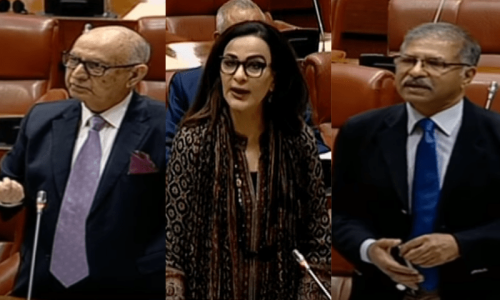THE expansion of the US bombing campaign in Afghanistan to target a little-known Chinese terrorist group is an example of how the 16-year-old war has changed under President Donald Trump, according to US military officers and outside analysts.
The air strikes began on Feb 2 in northeastern Afghanistan’s remote, mountainous Badakhshan province, destroying training camps and fighting positions in the Wurduj district. The area was once relatively peaceful but fell under Taliban control in 2015 and is now home to members of both the Taliban and a separatist group that is known as both the East Turkestan Islamic Movement (ETIM) and the Turkistan Islamic Party (TIP).
The Taliban and ETIM were commingled on the facilities that were bombed and often work together, said Air Force Brig Gen Lance Bunch, the director of future operations at the US-led military headquarters in Kabul. The strikes included three Humvees and two Ford Ranger pickup trucks that the United States once provided to Afghan troops and were in the process of being converted into rolling suicide bombs.
“Anybody that is an enemy of Afghanistan, we’re going to target them,” Bunch said in a phone interview. “We’ve got new authorities now that allow us to be able to...target the Taliban and the ETIM where they previously thought they were safe.”
The new authorities were approved in August by Trump, and the United States has escalated the air campaign ever since. While US officials have declined to say what specifically they entail, there is broad agreement that they have allowed the US military to expand how frequently it strikes.
The Air Force dropped 4,361 bombs in Afghanistan last year, as opposed to 1,337 in 2016 and 947 in 2015, according to service statistics.
The ETIM comprises ethnic Uyghur militants who want to form a separate state in or near the western Xinjiang region of China.
The group’s emir is believed to be Abdul Haq al Turkistani, who has been on Al Qaeda’s leadership council and was targeted by the Treasury Department in 2009 for his associations with other terrorists, said Thomas Joscelyn, a senior editor with The Long War Journal, which tracks terrorist organisations. The group threatened attacks on the 2008 Summer Olympic Games in Beijing.
The militants once had a home across the Afghan border in Pakistan but were pushed out of the North Waziristan region in 2015 as the US reduced the number of troops in Afghanistan and the Pakistani military ran a series of counterterrorism operations on its side of the border, said Michael Kugelman, who analyses terrorist groups for the Woodrow Wilson International Center for Scholars.
“It’s a group that has really flown under the radar in many ways in the broader constellation of terrorist organisations,” Kugelman said. “It typically has local aims, but I don’t think we should ever take light any group with ties to Al Qaeda.”
The group has expanded its operations in recent years. Under the TIP acronym, it fought in Syria alongside groups linked to Al Qaeda, according to an assessment released in November by the International Centre for Counterterrorism at The Hague.
Air Force Maj Gen James Hecker, the commander of the coalition’s air command in Afghanistan, told reporters on Wednesday that there has been a “change in weight of effort” recently in US intelligence-gathering that has provided US commanders with more information about potential targets. The United States also has added additional aircraft, including MQ-9 Reaper drones and a squadron of A-10C attack jets in southern Afghanistan.
“With the current uplift in resources, we can decimate Taliban command-and-control nodes,” Hecker said. “That means we can strike at the heart of training camps, where they brainwash young men to strap on a suicide vest, to kill themselves and their fellow Afghans, who are working to rebuild the country.”
It’s not clear how many other facilities might be targeted, or what it will take to turn the tide. The US military highlighted strikes this week near Bahram Chah, a border crossing town in southern Helmand province. Bunch said there also have been strikes recently in Nangarhar, an eastern province where the militant Islamic State group has maintained a presence.
Kugelman said the fact that there are so many apparent targets shows how rapidly security in Afghanistan has deteriorated over the past few years.
“It’s a very striking and sobering reminder of how widely the insurgency in Afghanistan has expanded,” he said. “For many years, the Taliban’s strongholds were in the south and southeast of the country, but in recent years all of a sudden you have the Taliban carving out area in new places. It’s pretty telling, and it’s pretty depressing, actually.”
—By arrangement with The Washington Post
Published in Dawn, February 11th, 2018












































